Those were the days when every renowned architect flocked to Shanghai, Beijing and Shenzhen and went wild. Some buildings were so avant-garde that citizens made fun of them, like the famous building of the state broadcaster CCTV, which was quickly dubbed “underpants” due to its strange shape. President Xi Jinping has put an end to this boom. In his column, Johnny Erling describes how this happened.
So far, Chinese shipbuilders have been successful mainly in the merchant and cargo ship sector. Now they also want to build cruise ships, the crown jewel of ocean shipping. The European competition is not impressed. The Chinese have already attempted this in the past – and failed. But China is patient, analyzes Joern Petring.
A little over a month ago, the recently ousted Chinese Foreign Minister Qin Gang vanished. The reasons remain unknown to the public. Another mystery is that important generals of the so-called Rocket Force, responsible for the nuclear arsenal, were dismissed and have since disappeared. Whether their dismissal is related to Qin Gang is a matter of speculation. After all, no reasons have been given for the dismissal of the generals of the Rocket Forces either. Michael Radunski has summed up all available facts and which of the scenarios are realistic.
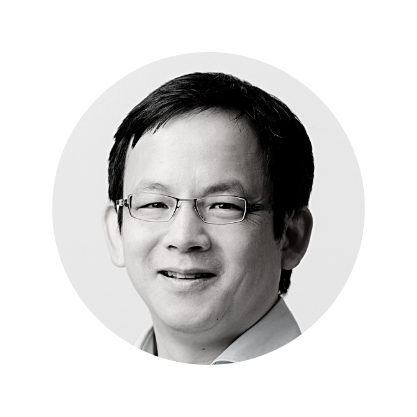
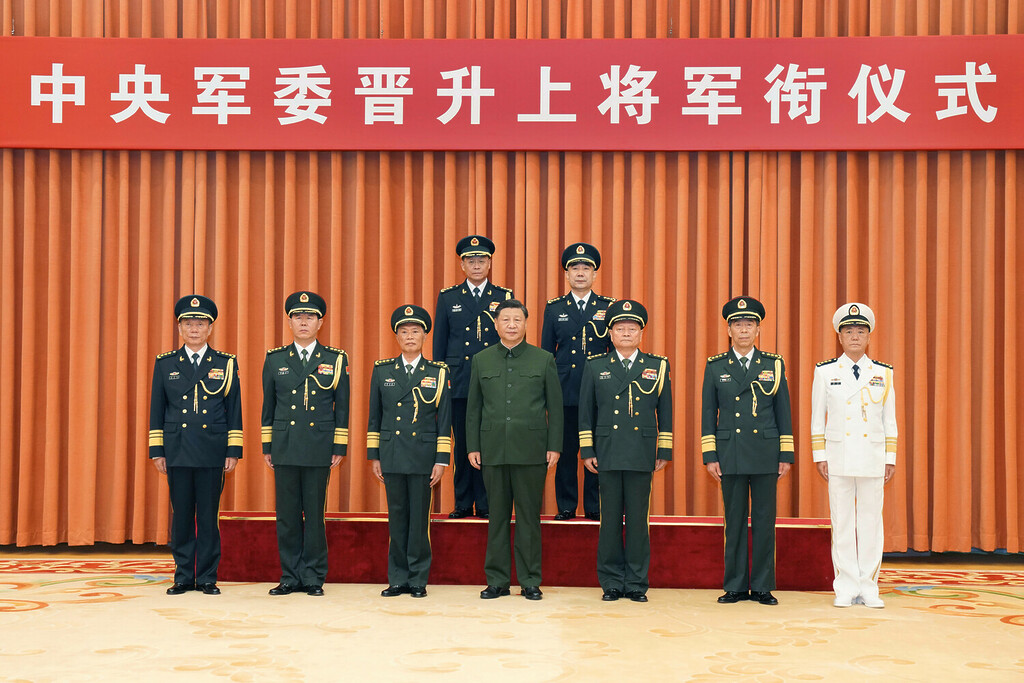
It was a short announcement that crossed the ticker of the state news agency Xinhua earlier this week: “Xi Jinping, chairman of the Central Military Commission (CMC), on Monday presented certificates of order to promote the commander of the rocket force Wang Houbin and its political commissar Xu Xisheng to the rank of general.”
What may seem to some like news exclusively for military experts is, according to analysts, the largest purge in decades in the Chinese military. The Rocket Forces of the Chinese People’s Liberation Army (中国人民解放军火箭军) is one of the PLA’s most important divisions. Their command includes China’s nuclear arsenal and the country’s strategic conventional missiles. The shake-up in its leadership therefore has far-reaching consequences – for Xi Jinping’s position of power, for the orientation of the Chinese military and ultimately also for Taiwan and the United States.
First, the facts: The new commander of the Rocket Force will be Wang Houbin 王厚斌. Wang has served as former deputy navy commander since 2020. His predecessor Li Yuchao has not been seen in public for weeks. Xinhua news agency did not give reasons for his removal. The current status of the dismissed is also unclear.
In parallel, Xu Xisheng 徐西盛 becomes the new political commissar of the PLA Rocket Force (PLARF), responsible for discipline and personnel matters, replacing Xu Zhongbo in this post. Xu Xisheng is an air force officer and a member of the Communist Party Central Committee. He most recently served as deputy political commissar of the Southern Theater Command.
One of Xi Jinping’s most important posts is the Central Military Commission chair. In this capacity, Xi has been working for years to transform the dusty People’s Liberation Army into a modern, powerful force. One key component is the Rocket Force of the Chinese People’s Liberation Army.
“The PLARF is a major focus of Xi personally,” Brendan Mulvaney told Table.Media. Since taking office, Xi has invested a lot of time and resources, as well as political support, in this force. “Xi talks about the PLARF as being central to future conflicts,” says the director of the China Aerospace Studies Institute, a renowned US Air Force think tank.
In 2016, Xi therefore upgraded the force in the PLA hierarchy. Its development reflects Xi’s ambitions: Turning China into a superpower ready to challenge American supremacy in the region.
The Rocket Forces have been expanded by 35 percent in the past four years alone – an impressive rate given the current crises and economic problems. It also has the world’s most extensive and versatile missile program, including Russia and the US. They are in charge of all of China’s land-based non-tactical missiles – conventional and nuclear.
“Unlike Russia and the United States, China is not bound by international treaties to limit the number of medium-range and intermediate-range ballistic missile systems that it owns, which makes this component of the PLARF a strategic asymmetric capability,” explains Daniel Rice in conversation with Table.Media. Rice is a military expert and president of Dong Feng, a China strategy consulting company.
Only a few weeks ago, a senior US Navy commander highlighted the danger posed by the Rocket Force. In an interview with TV station CBS, Admiral Samuel Paparo called the PLARF the greatest threat the US Navy faces in the Indo-Pacific. They play a prominent role in the scenarios of a possible war over Taiwan.
“That Xi Jinping is now dropping the commander of this important force and its political chief at the same time is an extremely unusual move,” Mulvaney says. But the reasons are still entirely unknown.
So far, there is no official explanation as to why the leadership of the Rocket Force has been removed. Accordingly, all kinds of rumors are circulating, including a possible connection to the vanished ex-Foreign Minister Qin Gang. Two explanations seem most plausible: corruption and espionage.
The South China Morning Post reports alleged corruption, citing two anonymous sources. Corruption is a frequently chosen accusation, especially under Xi Jinping. However, it usually conceals many other aspects, such as affairs or plain disloyalty. Moreover, it is unclear who else inside the PLA is under investigation in connection with these officials.
Observers report that several other individuals may be in trouble in connection with a possible corruption scandal:
The second theory is primarily supported by the British Financial Times: treason. The FT reports: “Foreign officials briefed on intelligence regarding the matter believe the two generals are being investigated for allegedly leaking military secrets.”
This thesis is bound to cause a stir in Beijing. CIA Director William Burns announced only a few weeks ago that his agency had made progress in rebuilding an informant network within the Chinese apparatus.
In any case, the reasons for the dismissals are less important than their implications. Two things, in particular, are important. First, the appointment of Wang Houbin, who made his career in the East and South Fleets, and Xu Xisheng, who comes from the Southern Theater Command, shows that Taiwan and the South China Sea remain the focus of the People’s Liberation Army.
And secondly, the fact that Xi is appointing Wang from the Navy and Xu from the Air Force to lead the Rocket Force shows how concerned the commander-in-chief must be. Xi further tightened his grip on a core branch of the People’s Liberation Army with this radical cut. Some may recall Xi’s words from the 20th Party Congress: The time for different factions is over. At any rate, Xi has brought the leadership of China’s Rocket Forces into line this week.
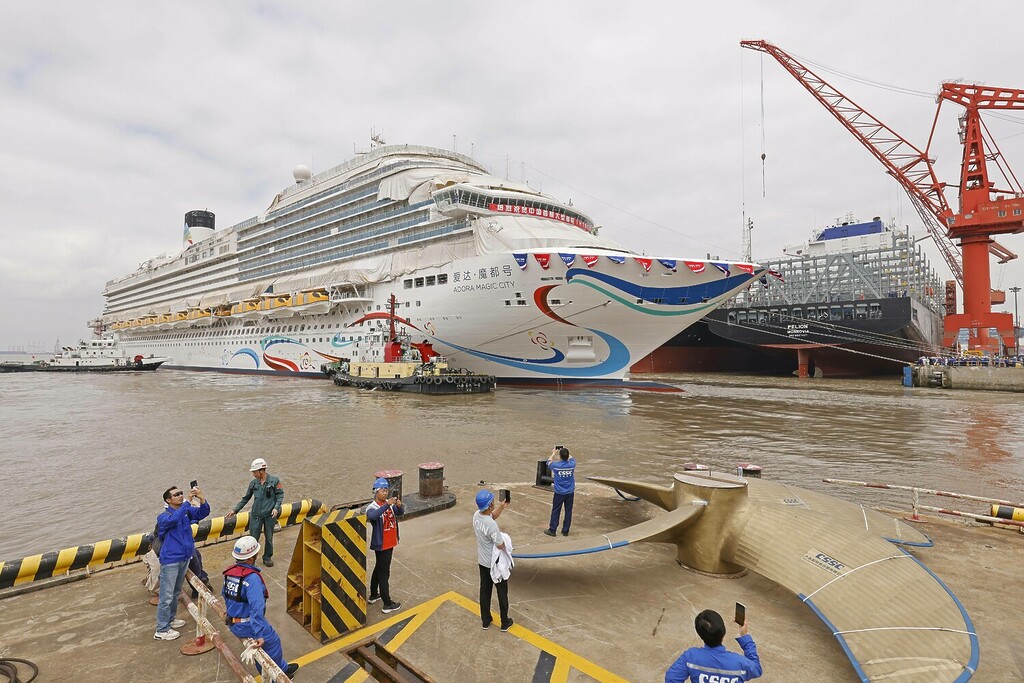
The first large cruise ship built in China has completed its maiden voyage. The ship christened the “Adora Magic City”, arrived back in the port of Shanghai a fortnight ago after eight days of sea trials. The “Adora Magic City,” with a displacement of 135,500 tons and 324 meters in length, has 2,125 rooms and can accommodate more than 6,500 passengers, according to a report by state broadcaster CGTN.
The ship was built at the Shanghai Waigaoqiao Shipbuilding yard, a subsidiary of the state-owned shipbuilding giant CSSC. The shipyard plans to deliver the ship by the end of the year. It is expected to start commercial operation in 2024.
During its maiden voyage, engineers checked, among other things, the performance of the ship’s systems, such as energy supply, propulsion and steering. They will now fine-tune the “Adora Magic City” and finish the interior design. A second sea trial is planned for October.
China has long held a strong position in global shipbuilding. However, Chinese manufacturers have so far been primarily active in the merchant and cargo ship market. European competitors have complained for years about unfair competitive conditions and Chinese dumping prices.
Yet the fact that the Chinese are now also setting their sights on the construction of cruise ships, the “crown jewel” of the shipping industry, is not yet alarming the West. The sector is self-confident. The risk of the Chinese advance is “not zero,” says Reinhard Luenke, Managing Director of German Shipbuilding and Ocean Industries Association (VSM), in an interview with Table.Media: “But we assessed the dangers higher ten years ago.” Even then, Lüken says, there was a lot of hype about the Chinese cruise market.
But the expectations of European manufacturers for a China boom were disappointed. People in the People’s Republic could not warm up to cruises. “A whole series of ships intended for the Chinese market were withdrawn because the tickets could not be sold,” Lüken says. Some ships designed for the Chinese market were even sent back to the shipyard after a short time. They were subsequently converted for the Western market at great expense and high investment.
Now China is setting out to build ships for its own market. It is well known that the Chinese have staying power, says Lüken. But the entry barriers are very high. “We have experience with other Asian players who have attempted to enter this market,” he says. “The Koreans tried for ten years and then gave up. The Japanese tried three times – also without success.”
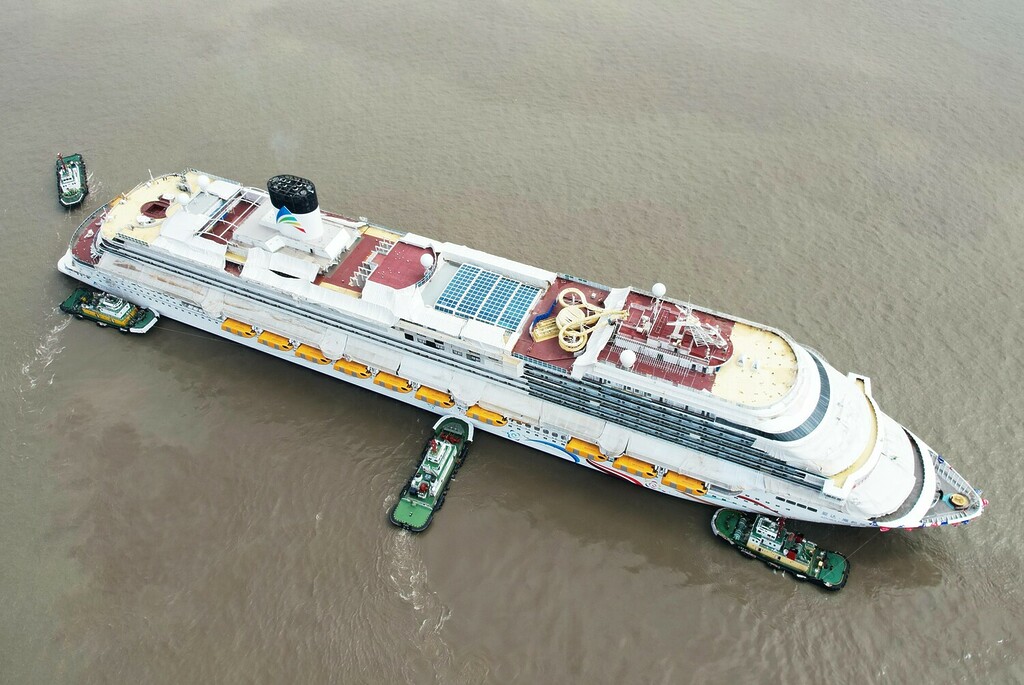
The Europeans dominate the industry with the Italian shipyard Fincantieri, Chantiers de l’Atlantique in France and Meyer Werft in Germany. “I expect that the three big European shipyards will continue to dominate the market,” says Lüken. And hardly anyone in the industry believes that a cruise boom will now break out in China after the slow start ten years ago and the Covid crisis.
Cruises work quite differently on the Asian market than in the Caribbean, for example. “Here, gambling plays a big role,” says Lüken. But the example of the Chinese gambling stronghold Macao shows that times are changing. The government is pursuing plans to make the city less dependent on its famous casinos. Gambling on the high seas could suffer a similar fate.
Experts in China are also cautious. “We have beaten South Korea and Japan in terms of conventional ships, but still lag behind in high-value-added ones,” said Shanghai economist Xu Mingqi in a recent interview on China’s cruise ambitions: “But we’re making more technical breakthroughs as we boost investment in research and development.”
So perhaps things will be similar for China’s cruise ships as they were for the first large passenger aircraft built in China. The Comac C919 is being delivered to Chinese airlines this year. The aircraft is still clearly inferior to the competition from Boeing and Airbus, but it is enough for China to slowly close the gap.
August 8, 2023; 9 a.m. CEST (3 p.m. CST)
German Chamber of Commerce in China, GCC Knowledge Hub (in Chinese): Way to Resolve Tax Disputes More
The employment of foreign doctoral students with involvement in a specific research project may fall under export control and be subject to authorization by the Federal Office for Economic Affairs and Export Control (BAFA). BAFA clarified this in response to an inquiry from Table.Media. The statement is relevant for colleges and universities amid the debate about a possible exclusion of Chinese scholarship holders sponsored by the state-run Chinese Scholarship Council (CSC). Institutions that employ doctoral students could be liable to prosecution under the German Foreign Trade and Payments Act, according to the BAFA. However, this only applies to special constellations.
“Both the content of the specific research project and the country of destination as well as the person of the recipient play a role in determining whether a project is not only subject to approval but also eligible for approval,” BAFA informed. Applications concerning research projects involving goods requiring approval or with potential uses related to weapons of mass destruction or conventional arms are to be subjected to close scrutiny, BAFA clarified.
The University of Erlangen-Nuremberg (FAU) obviously did not regard the employment of doctoral scholarship holders arranged and solely financed by the CSC to be subject to this close scrutiny. For this reason, FAU has now decided to exclude such scholarship holders since 1 June. The CSC scholarship program awards scholarships to young academics and is under the authority of the Beijing Ministry of Education. The university made the decision after a BAFA audit.
A BAFA spokesperson stated that the agency itself is generally not responsible for monitoring exporters and sanctioning violations of foreign trade law. Instead, this is the responsibility of the customs and law enforcement authorities. “However, if there are indications of any violations at BAFA or BMWK, these will be passed on directly to the responsible law enforcement and investigative authorities,” BAFA stated.
Universities and colleges could therefore be liable to prosecution if they fail to adequately screen doctoral fellows working, for example, on sensitive technology projects.
German Research Minister Bettina Stark-Watzinger warned that the CSC scholarship was one of China’s strategic instruments to close technological gaps by gaining access to foreign knowledge. In addition, she said, scholarship holders could not fully exercise the freedom of expression and academic freedom enshrined in the German constitution. She also called on other universities to follow FAU’s example.
In a statement to the Media Group Bavaria, the German Association of University Professors and Lecturers pleaded for a differentiated approach. “It is up to the university to decide. If there is a concrete suspicion of espionage, such an exclusion is probably warranted. However, I have problems with the absoluteness of the ban,” said Hubert Detmer, Second Managing Director of the association. At the very least, the evaluation must consider whether the research subject is a sensitive or neuralgic area, he said. tg
A rapid abandonment of mobile communications technology from Chinese providers will noticeably impact stability and transmission quality in German cell phone networks. At least, that is the concern of Vodafone Germany. An internal study revealed that countries where an unplanned, very rapid exclusion of individual technology providers had occurred experienced, in some cases, significant quality losses in their mobile networks, the company stated on Thursday.
The European Commission has been urging network operators and member states for years to abandon mobile technology from the People’s Republic. The EU has managed to reduce dependencies in other sectors such as energy in record time, said EU Internal Market Commissioner Thierry Breton. “The situation with 5G should be no different. We cannot afford to maintain critical dependencies that could become a weapon against our interest.” Breton urged all EU countries and telecom operators to take the necessary measures “without delay.”
According to the German press agency dpa, Vodafone pointed out that the consequences of abandoning antennas too quickly would not only be felt in the short term, but also after a longer period. ” The network quality could still be negatively affected up to a year after replacing the antennas,” the mobile network provider explained. For instance, the company said it had recorded significantly more dropped calls in countries where the replacement was quick and unplanned. Furthermore, it had become apparent that the rollout of 5th generation (5G) mobile networks had slowed considerably in most countries.
According to a report in the German business newspaper Handelsblatt, however, disruptions have not yet been observed in other countries. Denmark ordered the removal of Chinese components three years ago, and there have been no network problems as a result.
Nevertheless, telecommunications providers fear high costs resulting from a Chinese mobile communications technology ban. According to Handelsblatt, Deutsche Telekom, which would be particularly affected, already ran corresponding scenarios a few years ago in the event that the company was no longer allowed to use Chinese equipment suppliers in its networks. Accordingly, removing the components at Telekom could take up to five years and cost three billion euros.
However, the cost burden could be reduced by a gradual removal, as it is handled in other European countries, according to Handelsblatt. The UK, for instance, granted its network operators a period of seven years, and individual components need to be regularly replaced anyway. France is taking a similar approach. The discussion about the security risks and a potential ban has been going on for several years, but network operators nevertheless continued to install Huawei and ZTE parts.
Several Western countries accuse Huawei and ZTE of maintaining close ties with the Chinese government and have imposed sanctions on them. Huawei and ZTE reject the accusations. flee/jul
Nearly 60 percent of China’s top 100 real estate companies did not acquire land in the first seven months of this year, Yicai Global reports, citing a study by market research firm Kerry Research Center.
The report shows that land worth 11.6 trillion yuan (about 1.46 trillion euros) was bought by property developers listed in the top 100 between January and July, down 20 percent from the same period last year. China Resources Land, Binjiang Group and Poly Development spent the most on land.
The figures suggest that the country’s developers are wary of investing in the troubled market. If the real estate market does not recover, developers may remain reluctant to invest, the study suggests. jul
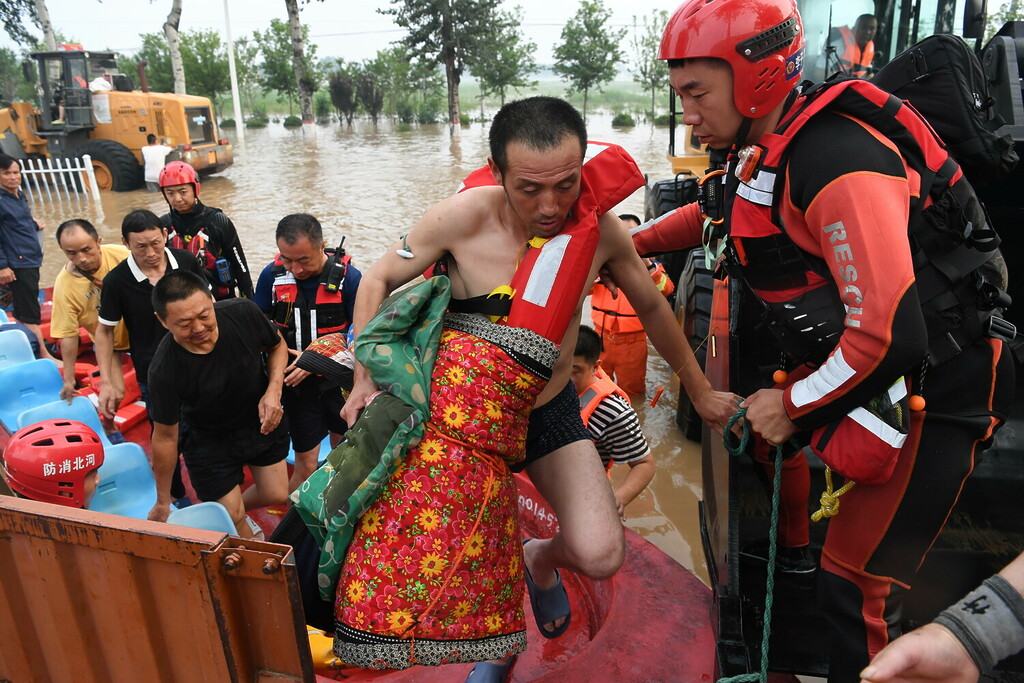
After typhoon “Doksuri,” the province of Hebei continues to struggle with the aftermath of the rain masses. On Thursday, emergency forces worked hard to rescue tens of thousands trapped in their homes and to drain water from the flooded reservoirs safely.
State media reported that technical flood control systems in the Hai He River area, where five rivers converge and which includes Hebei and the capital Beijing, were being put to the “most severe test” since the floods in the summer of 1996. The flood disaster in the Yangtze River basin killed 2,800 people at the time.
More than 1.2 million people in Hebei have been evacuated recently. The city of Zhuozhou, southwest of Beijing, has been hit hardest. It could take up to a month for the floodwaters to recede in this area, an employee of the water management office told state media.
Meanwhile, a highway bridge in northern China collapsed due to flash floods. Two cars fell into the river below the bridge, state media reported. A rescue operation is ongoing, and a section of the road has been closed. According to the Xin Jing Bao newspaper, the accident occurred on the road leading from Harbin to Mudanjiang in Heilongjiang province.
Meteorologists fear the rains could continue for several more weeks. rtr/jul

Architects of all stripes, from offices in the United States (I.M.Pei) to the crème de la crème of European designers and urban planners, made the pilgrimage to Beijing and Shanghai and left their architectural mark on the People’s Republic. In keeping with Mao’s motto: China is a blank sheet of paper on which the most beautiful characters can be written (一张 白纸 ….好画最新最美的画图).
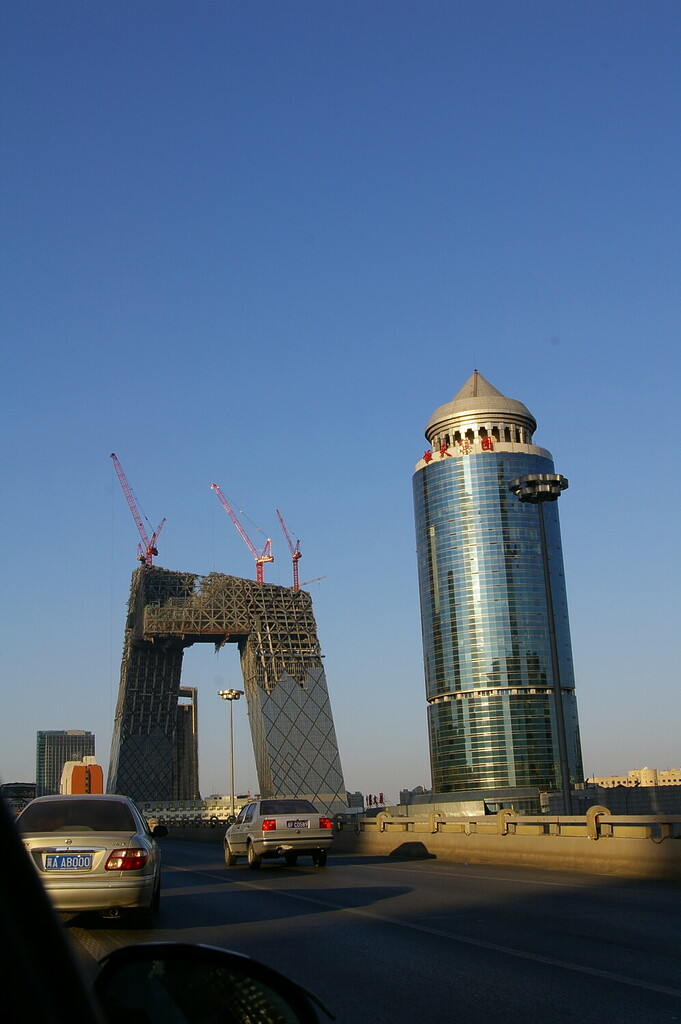
The illustrious list included Meinhard von Gerkan (gmp), Albert Speer und Partner (asp) Ole Scheren, the Dutch architect Rem Koolhaas, Switzerland’s Herzog & de Meuron, France’s Paul Andreu, the Iraqi-British Zaha Hadid and Norman Foster. Today, their skyscrapers dominate Shanghai’s skyline; mega projects such as the CCTV Tower, the National Theater and the Olympic stadiums are modern landmarks of Beijing City. China’s construction industry was booming.
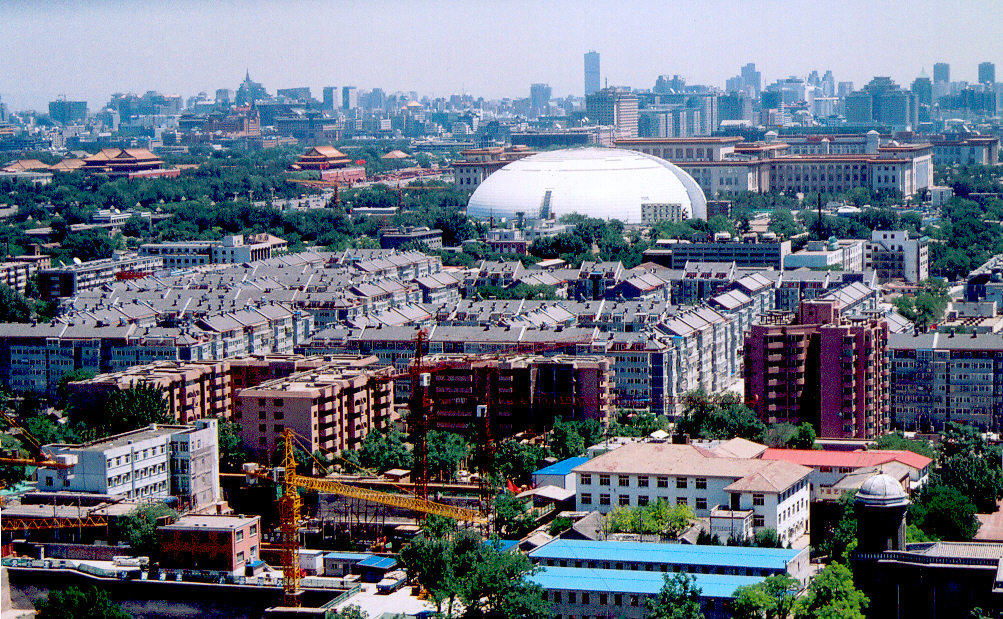
It was November 28, 2008, and Shanghai was still flying high. Akio Yoshimura, chief representative of the Japanese real estate group Mori, invited Beijing correspondents to tour his 492-meter SWFC World Financial Center in Shanghai’s Pudong Special Zone. He bragged that he built the “second tallest office tower in the world” based on the design by New York architect Kohn Pedersen Fox (KPF). Only Taiwan’s Taipei Tower 101 is taller, he said.
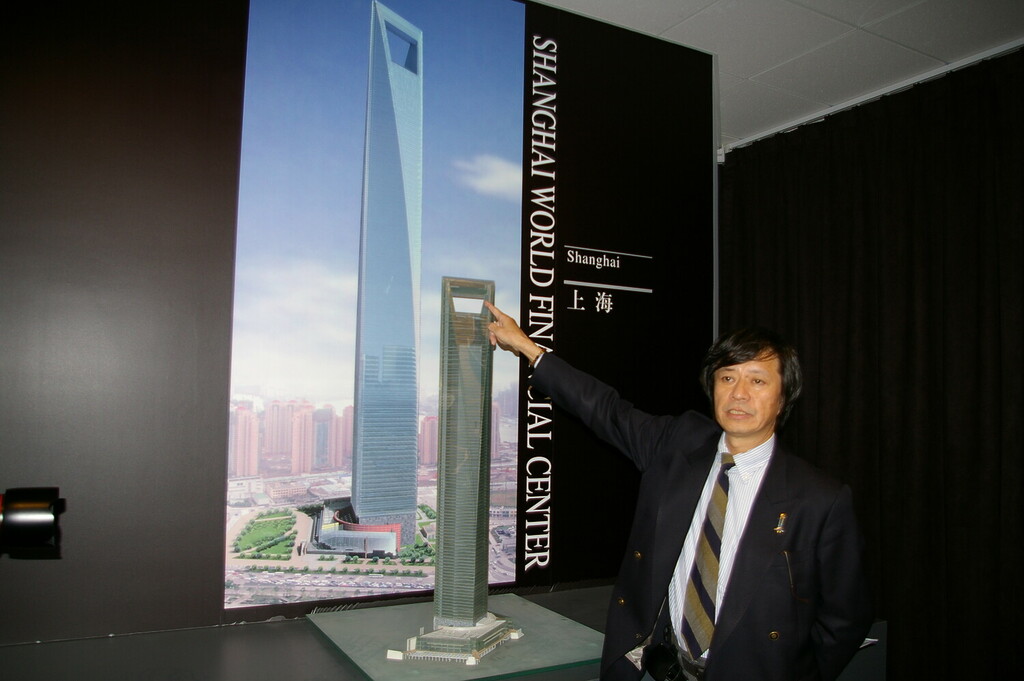
He was particularly proud of the observation deck at 474 meters, “the highest in the world.” All competitors seemed “tiny by comparison.” He referred to the 420.5-meter Jinmao Tower a few hundred meters away, designed by the US firm Skidmore, Owings & Merrill (SOM). He said the $750 million cost of his skyscraper was well worth it.
Yoshimura was unaware that Shanghai’s city government had decided to start construction on an even taller building ahead of schedule at a special meeting that day. Beijing wanted Shanghai to stand tall in the face of the global economic crisis. The next day, Shanghai’s media touted, “Against crisis and downward trend. Shanghai builds even higher.”
On November 29, ground was broken for the “Shanghai Center” (上海中心大厦), which would tower 632 meters and feature an observation platform at 562 meters high, towering over the adjacent Mori Tower. American architect Arthur Gensler had only won the tender for it in June. He celebrated the topping-out ceremony in August 2013.
Once again, the whole world praised the “Shanghai pace” at which super projects were raised. The Germans also contributed with multiple mega projects, including the spectacular Transrapid construction in Pudong (Thyssen), the Formula 1 racetrack built in only 18 months (architect Hermann Tilke), or the ecological small German-style “Anting New Town” by city planner Albert Speer & Partner (AS&P).
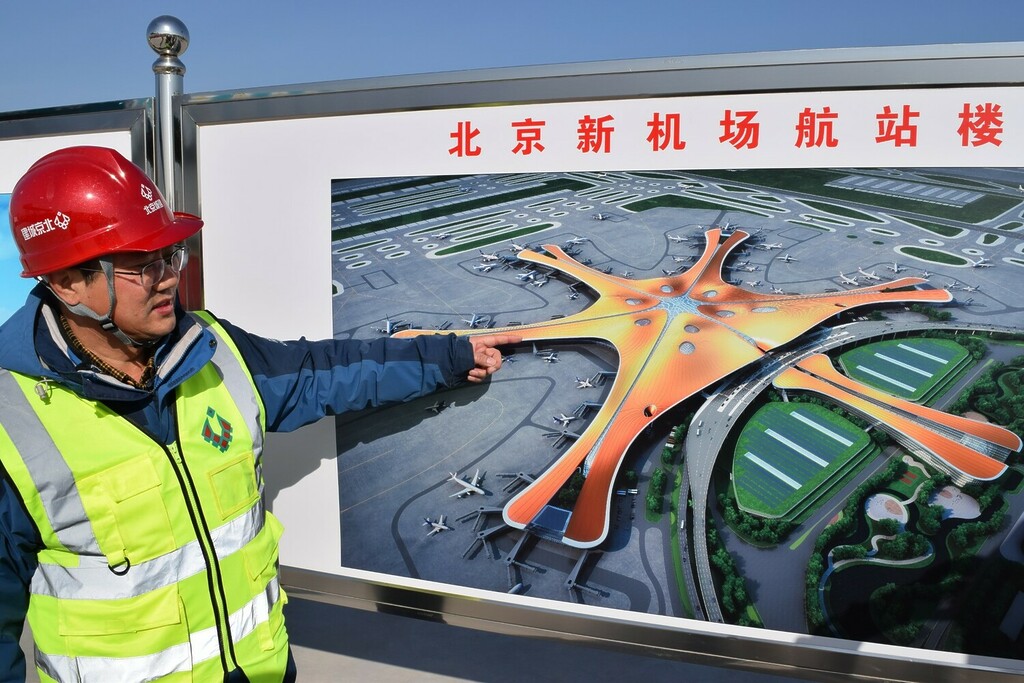
The three skyscrapers in Pudong became Shanghai’s new landmarks. 100 years ago, the port city had created attention as a counterpart to News York’s silhouette with its waterfront (Bund) and colonial bank, customs and trade buildings built in the European style. This was even more true in the 21st century, when dozens of avant-garde buildings on Shanghai’s other side of the river laid the foundation of its modern skyline.
Cities across the country were now succumbing to the skyscraper craze, popularizing a concept that had been around since the 1990s: the “Skyscraper Index.” It draws a link between new skyscraper construction records and the decline of institutions that reside in them and surpass their peak – as a warning signal of a crisis.
But another index fits China better. The annual MyCOS (麦可思研究院调查编著的) list shows the students’ favorite study choices and their chances of finding a high-paying job six months after graduating. Architecture and design ranked No. 1 among the ten most sought-after places to study until 2013. Their choice also guaranteed a job with the highest initial monthly wage 98.3 percent of the time.
But architecture has since dropped out of the top ranking, not even making it into the top ten majors, according to 2023 China’s investigative weekly Nanfang Zhoumo (南方周末). The website “Sixth Tone” wrote: “A decade ago, the profession was a symbol of the Chinese economic miracle.” Those days are gone. Frustrated, one student who graduated in 2018 complained of being unable to find work today: “Many of us are forced to deliver groceries as delivery drivers.”
For more than two decades, China had rapidly copied foreign buildings, even entire small towns, before Beijing’s construction ministry put a stop to “all buildings that are too big, too foreign and too strange” and banned the construction of skyscrapers taller than 500 meters.
China once had replicated dozens of White Houses, and erected Arc de Triomphe or Eiffel Towers. In 2011 Guangdong even built a complete replica of the picturesque Austrian alpine town of Hallstadt. Most served as advertising objects for real estate deals or as tourism magnets.
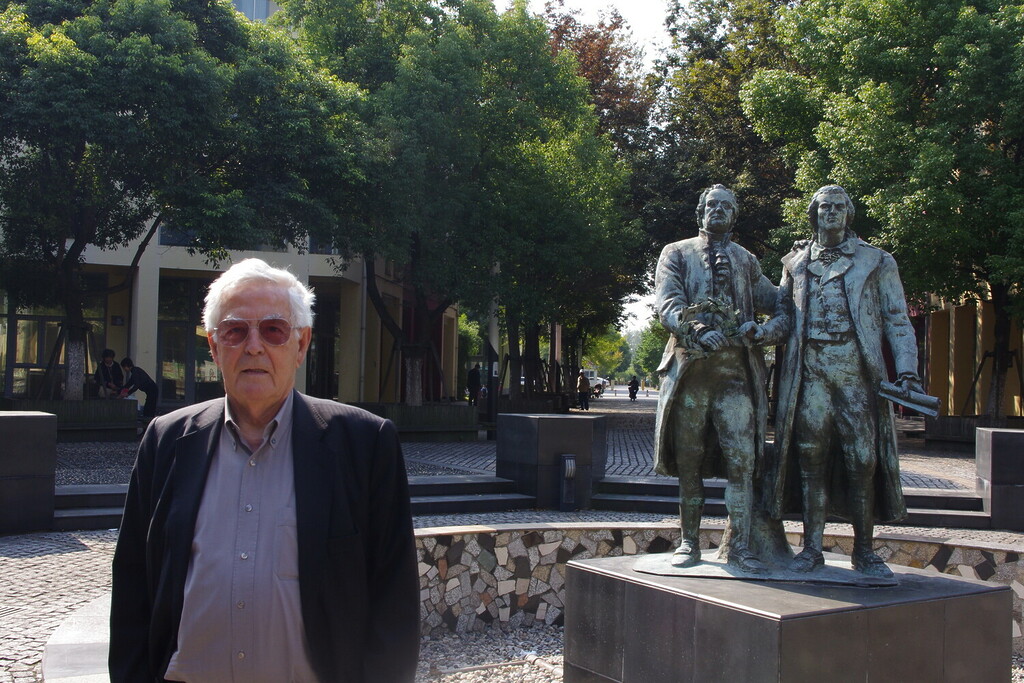
There were exceptions. For example, a model project tendered by Shanghai’s mayor in 1999 was designed to counteract the threatening uninhabitability of the Shanghai metropolis, which had become overdeveloped due to population growth and urbanization. A ring of nine attractive satellite cities based on the European model was planned. German urban planner Albert Speer and his partner Johannes Dell were commissioned to build one of the German-style small town of New Town Anting. “The main German things about it were features of the Bauhaus style, spatial planning and energy-saving utility technology,” Dell says today. But it took many years after completion before Shanghai citizens began to appreciate Anting. Only two of the nine “European” satellite cities were actually built. The German Anting and the British Thames Town.
There is more to China’s grotesque affair with Western architecture, claims journalist Bianca Bosker, who produced a comprehensive photo documentary in 2013. “Original Copies: Architectural Mimicry in Contemporary China.” “China is, in a very symbolic way, showing off its ability to rearrange the cosmos, to sort of own the greatest hits of the West.” It was no coincidence that mock-ups of the ‘White House,’ the ultimate symbol of US power, became the most copied buildings in the People’s Republic.
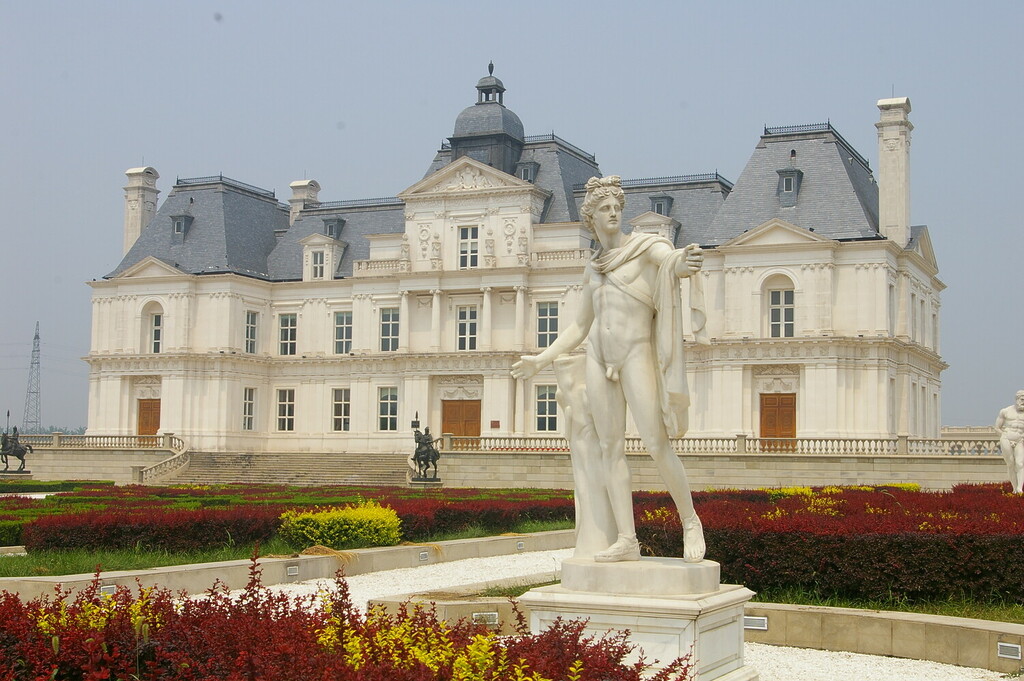
China’s traditional architects and building planners saw things differently. In an angry attack on November 11, 2013, they vented their resentment against Western dominance in contemporary architecture. The Academy of Engineering hosted a big conference in Nanjing. Former ministers of the Ministry of Construction attended, as did senior planning officials, 15 academy councilors, and representatives of all design institutes. They fumed about the alleged sellout of construction culture. They said that almost all new buildings in the core areas of Beijing, Shanghai and Guangzhou were designed by foreigners. They condemned the “four Beijing prestige buildings” designed by foreign designers as “extravagant, wasteful, unstable, and prone to earthquakes.” They cited the National Theater (国家大剧院), CCTV Tower (央视新大楼), and Olympic stadiums Bird’s Nest (鸟巢) and Water Cube (水立方). China’s Southern Weekly magazine (南方周末) headlined its report, “Cannon thunder on the architectural front” (中国当代建筑论坛上的 “炮声”).

A year after the conference, they were heard by party leader Xi Jinping. In a speech in December 2014, he demanded that China’s literature and art submit to the primacy of politics. In the process, he also commented on the dispute over avant-garde architecture. From that moment on, “no strange buildings” should appear in Beijing, such as the CCTV television building, which would be popularly mocked as ‘big underpants’ (北京市今后不太可能再出现如同 “大裤衩 “一样奇形怪状的建筑了).
This marked the end of the craze for experimental architecture. The great trek to China from abroad no longer leads to China. Things are currently looking bleak for Chinese builders for a variety of reasons. In July, the website Sixth Tone wrote the headline: “China Used to Be an Architect’s Dream. Now, It’s Becoming a Nightmare.”
Hugo Zhu will become the new CEO of EV manufacturer Aiways. He is expected to accelerate the expansion abroad.
Alan Beebe will become the new CEO of the nonprofit organization Urban Land Institute (ULI) for the Asia-Pacific region. He was previously President of the US Chamber of Commerce in China.
Is something changing in your organization? Let us know at heads@table.media!

The fashion company Bosie offers exclusively gender-neutral clothing and relies on a silver-gray, futuristic spaceship ambiance in its stores, like here at the flagship store in Shanghai. According to Bosie, the future of fashion will apparently no longer be divided by gender – at least that might be the message.
Those were the days when every renowned architect flocked to Shanghai, Beijing and Shenzhen and went wild. Some buildings were so avant-garde that citizens made fun of them, like the famous building of the state broadcaster CCTV, which was quickly dubbed “underpants” due to its strange shape. President Xi Jinping has put an end to this boom. In his column, Johnny Erling describes how this happened.
So far, Chinese shipbuilders have been successful mainly in the merchant and cargo ship sector. Now they also want to build cruise ships, the crown jewel of ocean shipping. The European competition is not impressed. The Chinese have already attempted this in the past – and failed. But China is patient, analyzes Joern Petring.
A little over a month ago, the recently ousted Chinese Foreign Minister Qin Gang vanished. The reasons remain unknown to the public. Another mystery is that important generals of the so-called Rocket Force, responsible for the nuclear arsenal, were dismissed and have since disappeared. Whether their dismissal is related to Qin Gang is a matter of speculation. After all, no reasons have been given for the dismissal of the generals of the Rocket Forces either. Michael Radunski has summed up all available facts and which of the scenarios are realistic.


It was a short announcement that crossed the ticker of the state news agency Xinhua earlier this week: “Xi Jinping, chairman of the Central Military Commission (CMC), on Monday presented certificates of order to promote the commander of the rocket force Wang Houbin and its political commissar Xu Xisheng to the rank of general.”
What may seem to some like news exclusively for military experts is, according to analysts, the largest purge in decades in the Chinese military. The Rocket Forces of the Chinese People’s Liberation Army (中国人民解放军火箭军) is one of the PLA’s most important divisions. Their command includes China’s nuclear arsenal and the country’s strategic conventional missiles. The shake-up in its leadership therefore has far-reaching consequences – for Xi Jinping’s position of power, for the orientation of the Chinese military and ultimately also for Taiwan and the United States.
First, the facts: The new commander of the Rocket Force will be Wang Houbin 王厚斌. Wang has served as former deputy navy commander since 2020. His predecessor Li Yuchao has not been seen in public for weeks. Xinhua news agency did not give reasons for his removal. The current status of the dismissed is also unclear.
In parallel, Xu Xisheng 徐西盛 becomes the new political commissar of the PLA Rocket Force (PLARF), responsible for discipline and personnel matters, replacing Xu Zhongbo in this post. Xu Xisheng is an air force officer and a member of the Communist Party Central Committee. He most recently served as deputy political commissar of the Southern Theater Command.
One of Xi Jinping’s most important posts is the Central Military Commission chair. In this capacity, Xi has been working for years to transform the dusty People’s Liberation Army into a modern, powerful force. One key component is the Rocket Force of the Chinese People’s Liberation Army.
“The PLARF is a major focus of Xi personally,” Brendan Mulvaney told Table.Media. Since taking office, Xi has invested a lot of time and resources, as well as political support, in this force. “Xi talks about the PLARF as being central to future conflicts,” says the director of the China Aerospace Studies Institute, a renowned US Air Force think tank.
In 2016, Xi therefore upgraded the force in the PLA hierarchy. Its development reflects Xi’s ambitions: Turning China into a superpower ready to challenge American supremacy in the region.
The Rocket Forces have been expanded by 35 percent in the past four years alone – an impressive rate given the current crises and economic problems. It also has the world’s most extensive and versatile missile program, including Russia and the US. They are in charge of all of China’s land-based non-tactical missiles – conventional and nuclear.
“Unlike Russia and the United States, China is not bound by international treaties to limit the number of medium-range and intermediate-range ballistic missile systems that it owns, which makes this component of the PLARF a strategic asymmetric capability,” explains Daniel Rice in conversation with Table.Media. Rice is a military expert and president of Dong Feng, a China strategy consulting company.
Only a few weeks ago, a senior US Navy commander highlighted the danger posed by the Rocket Force. In an interview with TV station CBS, Admiral Samuel Paparo called the PLARF the greatest threat the US Navy faces in the Indo-Pacific. They play a prominent role in the scenarios of a possible war over Taiwan.
“That Xi Jinping is now dropping the commander of this important force and its political chief at the same time is an extremely unusual move,” Mulvaney says. But the reasons are still entirely unknown.
So far, there is no official explanation as to why the leadership of the Rocket Force has been removed. Accordingly, all kinds of rumors are circulating, including a possible connection to the vanished ex-Foreign Minister Qin Gang. Two explanations seem most plausible: corruption and espionage.
The South China Morning Post reports alleged corruption, citing two anonymous sources. Corruption is a frequently chosen accusation, especially under Xi Jinping. However, it usually conceals many other aspects, such as affairs or plain disloyalty. Moreover, it is unclear who else inside the PLA is under investigation in connection with these officials.
Observers report that several other individuals may be in trouble in connection with a possible corruption scandal:
The second theory is primarily supported by the British Financial Times: treason. The FT reports: “Foreign officials briefed on intelligence regarding the matter believe the two generals are being investigated for allegedly leaking military secrets.”
This thesis is bound to cause a stir in Beijing. CIA Director William Burns announced only a few weeks ago that his agency had made progress in rebuilding an informant network within the Chinese apparatus.
In any case, the reasons for the dismissals are less important than their implications. Two things, in particular, are important. First, the appointment of Wang Houbin, who made his career in the East and South Fleets, and Xu Xisheng, who comes from the Southern Theater Command, shows that Taiwan and the South China Sea remain the focus of the People’s Liberation Army.
And secondly, the fact that Xi is appointing Wang from the Navy and Xu from the Air Force to lead the Rocket Force shows how concerned the commander-in-chief must be. Xi further tightened his grip on a core branch of the People’s Liberation Army with this radical cut. Some may recall Xi’s words from the 20th Party Congress: The time for different factions is over. At any rate, Xi has brought the leadership of China’s Rocket Forces into line this week.

The first large cruise ship built in China has completed its maiden voyage. The ship christened the “Adora Magic City”, arrived back in the port of Shanghai a fortnight ago after eight days of sea trials. The “Adora Magic City,” with a displacement of 135,500 tons and 324 meters in length, has 2,125 rooms and can accommodate more than 6,500 passengers, according to a report by state broadcaster CGTN.
The ship was built at the Shanghai Waigaoqiao Shipbuilding yard, a subsidiary of the state-owned shipbuilding giant CSSC. The shipyard plans to deliver the ship by the end of the year. It is expected to start commercial operation in 2024.
During its maiden voyage, engineers checked, among other things, the performance of the ship’s systems, such as energy supply, propulsion and steering. They will now fine-tune the “Adora Magic City” and finish the interior design. A second sea trial is planned for October.
China has long held a strong position in global shipbuilding. However, Chinese manufacturers have so far been primarily active in the merchant and cargo ship market. European competitors have complained for years about unfair competitive conditions and Chinese dumping prices.
Yet the fact that the Chinese are now also setting their sights on the construction of cruise ships, the “crown jewel” of the shipping industry, is not yet alarming the West. The sector is self-confident. The risk of the Chinese advance is “not zero,” says Reinhard Luenke, Managing Director of German Shipbuilding and Ocean Industries Association (VSM), in an interview with Table.Media: “But we assessed the dangers higher ten years ago.” Even then, Lüken says, there was a lot of hype about the Chinese cruise market.
But the expectations of European manufacturers for a China boom were disappointed. People in the People’s Republic could not warm up to cruises. “A whole series of ships intended for the Chinese market were withdrawn because the tickets could not be sold,” Lüken says. Some ships designed for the Chinese market were even sent back to the shipyard after a short time. They were subsequently converted for the Western market at great expense and high investment.
Now China is setting out to build ships for its own market. It is well known that the Chinese have staying power, says Lüken. But the entry barriers are very high. “We have experience with other Asian players who have attempted to enter this market,” he says. “The Koreans tried for ten years and then gave up. The Japanese tried three times – also without success.”

The Europeans dominate the industry with the Italian shipyard Fincantieri, Chantiers de l’Atlantique in France and Meyer Werft in Germany. “I expect that the three big European shipyards will continue to dominate the market,” says Lüken. And hardly anyone in the industry believes that a cruise boom will now break out in China after the slow start ten years ago and the Covid crisis.
Cruises work quite differently on the Asian market than in the Caribbean, for example. “Here, gambling plays a big role,” says Lüken. But the example of the Chinese gambling stronghold Macao shows that times are changing. The government is pursuing plans to make the city less dependent on its famous casinos. Gambling on the high seas could suffer a similar fate.
Experts in China are also cautious. “We have beaten South Korea and Japan in terms of conventional ships, but still lag behind in high-value-added ones,” said Shanghai economist Xu Mingqi in a recent interview on China’s cruise ambitions: “But we’re making more technical breakthroughs as we boost investment in research and development.”
So perhaps things will be similar for China’s cruise ships as they were for the first large passenger aircraft built in China. The Comac C919 is being delivered to Chinese airlines this year. The aircraft is still clearly inferior to the competition from Boeing and Airbus, but it is enough for China to slowly close the gap.
August 8, 2023; 9 a.m. CEST (3 p.m. CST)
German Chamber of Commerce in China, GCC Knowledge Hub (in Chinese): Way to Resolve Tax Disputes More
The employment of foreign doctoral students with involvement in a specific research project may fall under export control and be subject to authorization by the Federal Office for Economic Affairs and Export Control (BAFA). BAFA clarified this in response to an inquiry from Table.Media. The statement is relevant for colleges and universities amid the debate about a possible exclusion of Chinese scholarship holders sponsored by the state-run Chinese Scholarship Council (CSC). Institutions that employ doctoral students could be liable to prosecution under the German Foreign Trade and Payments Act, according to the BAFA. However, this only applies to special constellations.
“Both the content of the specific research project and the country of destination as well as the person of the recipient play a role in determining whether a project is not only subject to approval but also eligible for approval,” BAFA informed. Applications concerning research projects involving goods requiring approval or with potential uses related to weapons of mass destruction or conventional arms are to be subjected to close scrutiny, BAFA clarified.
The University of Erlangen-Nuremberg (FAU) obviously did not regard the employment of doctoral scholarship holders arranged and solely financed by the CSC to be subject to this close scrutiny. For this reason, FAU has now decided to exclude such scholarship holders since 1 June. The CSC scholarship program awards scholarships to young academics and is under the authority of the Beijing Ministry of Education. The university made the decision after a BAFA audit.
A BAFA spokesperson stated that the agency itself is generally not responsible for monitoring exporters and sanctioning violations of foreign trade law. Instead, this is the responsibility of the customs and law enforcement authorities. “However, if there are indications of any violations at BAFA or BMWK, these will be passed on directly to the responsible law enforcement and investigative authorities,” BAFA stated.
Universities and colleges could therefore be liable to prosecution if they fail to adequately screen doctoral fellows working, for example, on sensitive technology projects.
German Research Minister Bettina Stark-Watzinger warned that the CSC scholarship was one of China’s strategic instruments to close technological gaps by gaining access to foreign knowledge. In addition, she said, scholarship holders could not fully exercise the freedom of expression and academic freedom enshrined in the German constitution. She also called on other universities to follow FAU’s example.
In a statement to the Media Group Bavaria, the German Association of University Professors and Lecturers pleaded for a differentiated approach. “It is up to the university to decide. If there is a concrete suspicion of espionage, such an exclusion is probably warranted. However, I have problems with the absoluteness of the ban,” said Hubert Detmer, Second Managing Director of the association. At the very least, the evaluation must consider whether the research subject is a sensitive or neuralgic area, he said. tg
A rapid abandonment of mobile communications technology from Chinese providers will noticeably impact stability and transmission quality in German cell phone networks. At least, that is the concern of Vodafone Germany. An internal study revealed that countries where an unplanned, very rapid exclusion of individual technology providers had occurred experienced, in some cases, significant quality losses in their mobile networks, the company stated on Thursday.
The European Commission has been urging network operators and member states for years to abandon mobile technology from the People’s Republic. The EU has managed to reduce dependencies in other sectors such as energy in record time, said EU Internal Market Commissioner Thierry Breton. “The situation with 5G should be no different. We cannot afford to maintain critical dependencies that could become a weapon against our interest.” Breton urged all EU countries and telecom operators to take the necessary measures “without delay.”
According to the German press agency dpa, Vodafone pointed out that the consequences of abandoning antennas too quickly would not only be felt in the short term, but also after a longer period. ” The network quality could still be negatively affected up to a year after replacing the antennas,” the mobile network provider explained. For instance, the company said it had recorded significantly more dropped calls in countries where the replacement was quick and unplanned. Furthermore, it had become apparent that the rollout of 5th generation (5G) mobile networks had slowed considerably in most countries.
According to a report in the German business newspaper Handelsblatt, however, disruptions have not yet been observed in other countries. Denmark ordered the removal of Chinese components three years ago, and there have been no network problems as a result.
Nevertheless, telecommunications providers fear high costs resulting from a Chinese mobile communications technology ban. According to Handelsblatt, Deutsche Telekom, which would be particularly affected, already ran corresponding scenarios a few years ago in the event that the company was no longer allowed to use Chinese equipment suppliers in its networks. Accordingly, removing the components at Telekom could take up to five years and cost three billion euros.
However, the cost burden could be reduced by a gradual removal, as it is handled in other European countries, according to Handelsblatt. The UK, for instance, granted its network operators a period of seven years, and individual components need to be regularly replaced anyway. France is taking a similar approach. The discussion about the security risks and a potential ban has been going on for several years, but network operators nevertheless continued to install Huawei and ZTE parts.
Several Western countries accuse Huawei and ZTE of maintaining close ties with the Chinese government and have imposed sanctions on them. Huawei and ZTE reject the accusations. flee/jul
Nearly 60 percent of China’s top 100 real estate companies did not acquire land in the first seven months of this year, Yicai Global reports, citing a study by market research firm Kerry Research Center.
The report shows that land worth 11.6 trillion yuan (about 1.46 trillion euros) was bought by property developers listed in the top 100 between January and July, down 20 percent from the same period last year. China Resources Land, Binjiang Group and Poly Development spent the most on land.
The figures suggest that the country’s developers are wary of investing in the troubled market. If the real estate market does not recover, developers may remain reluctant to invest, the study suggests. jul

After typhoon “Doksuri,” the province of Hebei continues to struggle with the aftermath of the rain masses. On Thursday, emergency forces worked hard to rescue tens of thousands trapped in their homes and to drain water from the flooded reservoirs safely.
State media reported that technical flood control systems in the Hai He River area, where five rivers converge and which includes Hebei and the capital Beijing, were being put to the “most severe test” since the floods in the summer of 1996. The flood disaster in the Yangtze River basin killed 2,800 people at the time.
More than 1.2 million people in Hebei have been evacuated recently. The city of Zhuozhou, southwest of Beijing, has been hit hardest. It could take up to a month for the floodwaters to recede in this area, an employee of the water management office told state media.
Meanwhile, a highway bridge in northern China collapsed due to flash floods. Two cars fell into the river below the bridge, state media reported. A rescue operation is ongoing, and a section of the road has been closed. According to the Xin Jing Bao newspaper, the accident occurred on the road leading from Harbin to Mudanjiang in Heilongjiang province.
Meteorologists fear the rains could continue for several more weeks. rtr/jul

Architects of all stripes, from offices in the United States (I.M.Pei) to the crème de la crème of European designers and urban planners, made the pilgrimage to Beijing and Shanghai and left their architectural mark on the People’s Republic. In keeping with Mao’s motto: China is a blank sheet of paper on which the most beautiful characters can be written (一张 白纸 ….好画最新最美的画图).

The illustrious list included Meinhard von Gerkan (gmp), Albert Speer und Partner (asp) Ole Scheren, the Dutch architect Rem Koolhaas, Switzerland’s Herzog & de Meuron, France’s Paul Andreu, the Iraqi-British Zaha Hadid and Norman Foster. Today, their skyscrapers dominate Shanghai’s skyline; mega projects such as the CCTV Tower, the National Theater and the Olympic stadiums are modern landmarks of Beijing City. China’s construction industry was booming.

It was November 28, 2008, and Shanghai was still flying high. Akio Yoshimura, chief representative of the Japanese real estate group Mori, invited Beijing correspondents to tour his 492-meter SWFC World Financial Center in Shanghai’s Pudong Special Zone. He bragged that he built the “second tallest office tower in the world” based on the design by New York architect Kohn Pedersen Fox (KPF). Only Taiwan’s Taipei Tower 101 is taller, he said.

He was particularly proud of the observation deck at 474 meters, “the highest in the world.” All competitors seemed “tiny by comparison.” He referred to the 420.5-meter Jinmao Tower a few hundred meters away, designed by the US firm Skidmore, Owings & Merrill (SOM). He said the $750 million cost of his skyscraper was well worth it.
Yoshimura was unaware that Shanghai’s city government had decided to start construction on an even taller building ahead of schedule at a special meeting that day. Beijing wanted Shanghai to stand tall in the face of the global economic crisis. The next day, Shanghai’s media touted, “Against crisis and downward trend. Shanghai builds even higher.”
On November 29, ground was broken for the “Shanghai Center” (上海中心大厦), which would tower 632 meters and feature an observation platform at 562 meters high, towering over the adjacent Mori Tower. American architect Arthur Gensler had only won the tender for it in June. He celebrated the topping-out ceremony in August 2013.
Once again, the whole world praised the “Shanghai pace” at which super projects were raised. The Germans also contributed with multiple mega projects, including the spectacular Transrapid construction in Pudong (Thyssen), the Formula 1 racetrack built in only 18 months (architect Hermann Tilke), or the ecological small German-style “Anting New Town” by city planner Albert Speer & Partner (AS&P).

The three skyscrapers in Pudong became Shanghai’s new landmarks. 100 years ago, the port city had created attention as a counterpart to News York’s silhouette with its waterfront (Bund) and colonial bank, customs and trade buildings built in the European style. This was even more true in the 21st century, when dozens of avant-garde buildings on Shanghai’s other side of the river laid the foundation of its modern skyline.
Cities across the country were now succumbing to the skyscraper craze, popularizing a concept that had been around since the 1990s: the “Skyscraper Index.” It draws a link between new skyscraper construction records and the decline of institutions that reside in them and surpass their peak – as a warning signal of a crisis.
But another index fits China better. The annual MyCOS (麦可思研究院调查编著的) list shows the students’ favorite study choices and their chances of finding a high-paying job six months after graduating. Architecture and design ranked No. 1 among the ten most sought-after places to study until 2013. Their choice also guaranteed a job with the highest initial monthly wage 98.3 percent of the time.
But architecture has since dropped out of the top ranking, not even making it into the top ten majors, according to 2023 China’s investigative weekly Nanfang Zhoumo (南方周末). The website “Sixth Tone” wrote: “A decade ago, the profession was a symbol of the Chinese economic miracle.” Those days are gone. Frustrated, one student who graduated in 2018 complained of being unable to find work today: “Many of us are forced to deliver groceries as delivery drivers.”
For more than two decades, China had rapidly copied foreign buildings, even entire small towns, before Beijing’s construction ministry put a stop to “all buildings that are too big, too foreign and too strange” and banned the construction of skyscrapers taller than 500 meters.
China once had replicated dozens of White Houses, and erected Arc de Triomphe or Eiffel Towers. In 2011 Guangdong even built a complete replica of the picturesque Austrian alpine town of Hallstadt. Most served as advertising objects for real estate deals or as tourism magnets.

There were exceptions. For example, a model project tendered by Shanghai’s mayor in 1999 was designed to counteract the threatening uninhabitability of the Shanghai metropolis, which had become overdeveloped due to population growth and urbanization. A ring of nine attractive satellite cities based on the European model was planned. German urban planner Albert Speer and his partner Johannes Dell were commissioned to build one of the German-style small town of New Town Anting. “The main German things about it were features of the Bauhaus style, spatial planning and energy-saving utility technology,” Dell says today. But it took many years after completion before Shanghai citizens began to appreciate Anting. Only two of the nine “European” satellite cities were actually built. The German Anting and the British Thames Town.
There is more to China’s grotesque affair with Western architecture, claims journalist Bianca Bosker, who produced a comprehensive photo documentary in 2013. “Original Copies: Architectural Mimicry in Contemporary China.” “China is, in a very symbolic way, showing off its ability to rearrange the cosmos, to sort of own the greatest hits of the West.” It was no coincidence that mock-ups of the ‘White House,’ the ultimate symbol of US power, became the most copied buildings in the People’s Republic.

China’s traditional architects and building planners saw things differently. In an angry attack on November 11, 2013, they vented their resentment against Western dominance in contemporary architecture. The Academy of Engineering hosted a big conference in Nanjing. Former ministers of the Ministry of Construction attended, as did senior planning officials, 15 academy councilors, and representatives of all design institutes. They fumed about the alleged sellout of construction culture. They said that almost all new buildings in the core areas of Beijing, Shanghai and Guangzhou were designed by foreigners. They condemned the “four Beijing prestige buildings” designed by foreign designers as “extravagant, wasteful, unstable, and prone to earthquakes.” They cited the National Theater (国家大剧院), CCTV Tower (央视新大楼), and Olympic stadiums Bird’s Nest (鸟巢) and Water Cube (水立方). China’s Southern Weekly magazine (南方周末) headlined its report, “Cannon thunder on the architectural front” (中国当代建筑论坛上的 “炮声”).

A year after the conference, they were heard by party leader Xi Jinping. In a speech in December 2014, he demanded that China’s literature and art submit to the primacy of politics. In the process, he also commented on the dispute over avant-garde architecture. From that moment on, “no strange buildings” should appear in Beijing, such as the CCTV television building, which would be popularly mocked as ‘big underpants’ (北京市今后不太可能再出现如同 “大裤衩 “一样奇形怪状的建筑了).
This marked the end of the craze for experimental architecture. The great trek to China from abroad no longer leads to China. Things are currently looking bleak for Chinese builders for a variety of reasons. In July, the website Sixth Tone wrote the headline: “China Used to Be an Architect’s Dream. Now, It’s Becoming a Nightmare.”
Hugo Zhu will become the new CEO of EV manufacturer Aiways. He is expected to accelerate the expansion abroad.
Alan Beebe will become the new CEO of the nonprofit organization Urban Land Institute (ULI) for the Asia-Pacific region. He was previously President of the US Chamber of Commerce in China.
Is something changing in your organization? Let us know at heads@table.media!

The fashion company Bosie offers exclusively gender-neutral clothing and relies on a silver-gray, futuristic spaceship ambiance in its stores, like here at the flagship store in Shanghai. According to Bosie, the future of fashion will apparently no longer be divided by gender – at least that might be the message.
